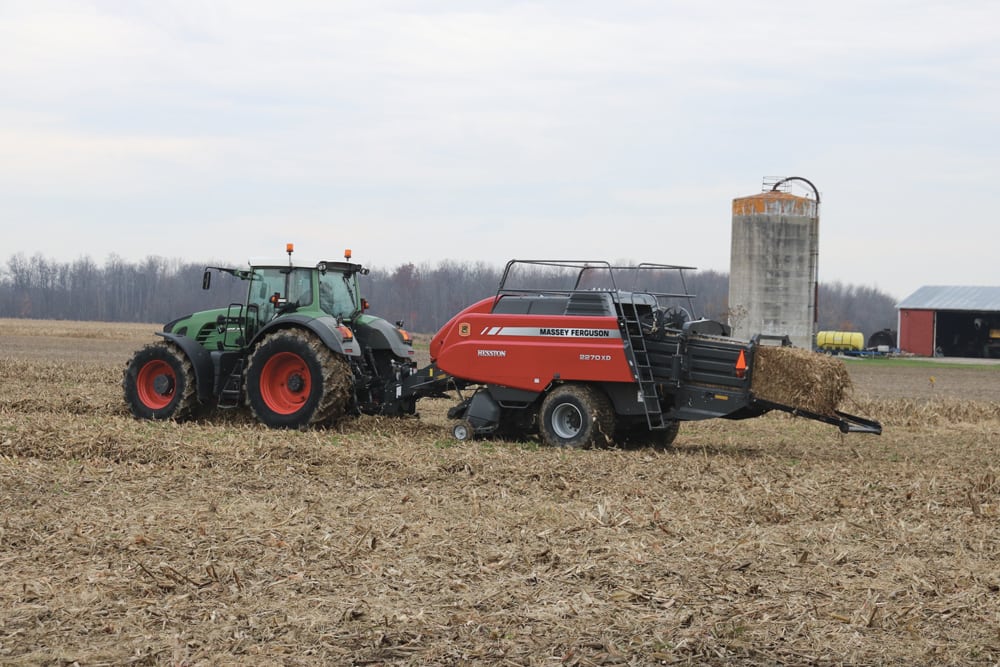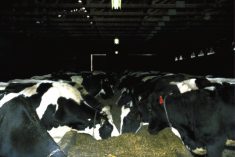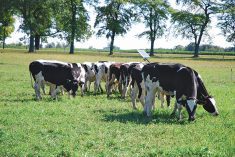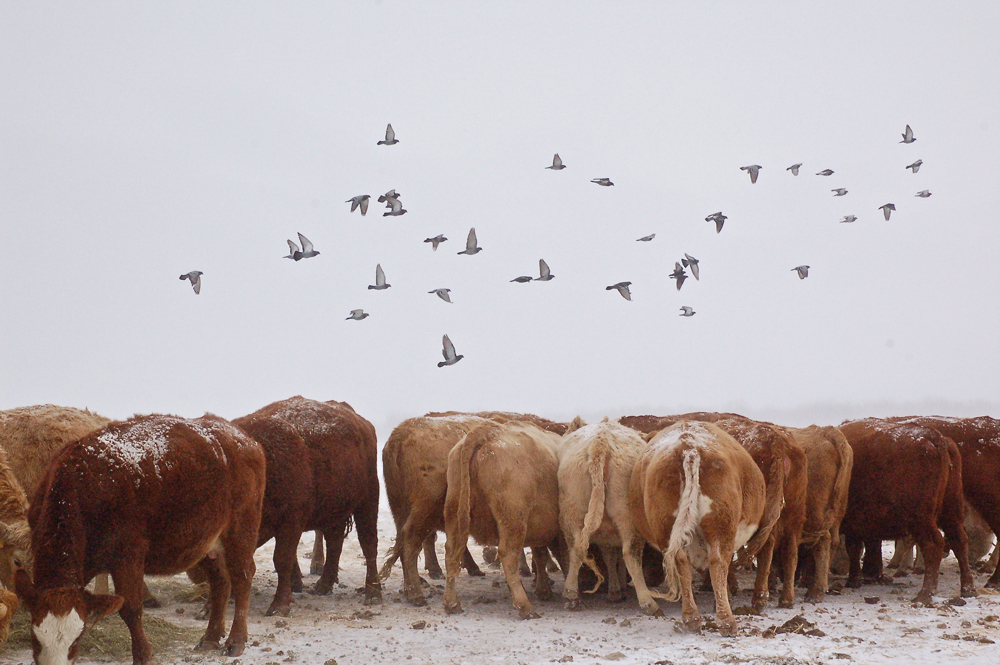Pasture conditions and a less-than-ideal first cut already have some producers weighing options on feed, but one Manitoba farmer says the answer might lie in the corn stover.
Alfred Billingham, along with his wife, Judy, says they’ve filled in their feed supplies with baled corn stover for years, a practice more popular in the longer growing season in the United States.
“Sometimes we were rolling up snow and all sorts of things and, in the first year, we weren’t sure whether that was smart or not, but the bales actually fermented from the moisture in them most times and the cows really like that stuff,” he said. “But it’s a slow process. It takes usually a week to do a quarter.”
Read Also

Smart deworming for sheep starts with individual fecal egg counts
Fecal egg count tests are one step to managing dewormer resistance and managing sheep parasites on Canadian sheep farms to maintain flock health.
Billingham turned to an all-crop combine header with choppers to slice corn close to the ground and run the entire plant through the combine. The chopped stalks and leaves would then be immediately picked up by a baler running behind the combine.
Bale contents were shredded just before feeding and laid down in a feed row to supplement the Billinghams’ other feed.
The producers estimate they got anywhere from two to five bales an acre each year.
“The best time to bale it is right after the combine has dropped it,” Judy Billingham said. “You leave it too long, then it gets frost on it and if you don’t have good belts in your baler, the belts will ice up in the ridges and then it slips and you can’t bale anything.”
The alternative feed may draw the eye of producers already looking at short supplies this year. Provincial experts have warned that some pastures were already stressed going into the year, after dry conditions last fall caused some farmers to push pasture supplies. Others may be stressed from premature turnout and poor growing conditions this spring. Added to that, producers have reported below-average hay cuts in much of the province.
Equipment challenges
Billingham says that corn stover was a boon to his cattle operation, but admits that the harvest process was slow, something that might make other producers reluctant to adopt the practice.
The thick stalks and high biomass risked plugging the combine, and most days his speed topped out at two miles an hour.
“You’re dealing with huge amounts of product,” he said.
“The limiting speed of the combining had a lot to do with the fact that the header would only take the corn so fast, because there’s a lot of power required to chop all of that stover,” he added
Billingham’s all-crop header has also largely fallen out of favour with farmers, and most would have to add in the cost of that investment.
Equipment costs also extended to the baler, the Billinghams said. The couple’s original baler lost a long line of teeth every year from picking stover out of the roughage, although Alfred noted that the problem reduced significantly after the farm added a new baler with different pickups.
“It was really hard on the baling, but you ended up with a product that you basically had to fight with otherwise,” he said. “If you don’t clean the cornfield off, you have to go out there with a heavy disc and disc it or some other method to chop that stuff up.”
What about spoilage?
Manitoba Agriculture livestock specialist Ray Bittner says stover may be a viable option some years, but he’s cautious about consistently relying on the method.
Bittner says Manitoba’s shorter growing season and typical fall weather shifts make it less friendly for baled stover, since stalks do not dry properly when corn is harvested in late fall as they might farther south.
“What happens is you roll that corn stover together into a bale and those damp stalks will start moulding and they’ll start heating,” he said.
“In the past, it’s taken kind of outstanding years of really good maturity in corn to mature in time that it could be combined and baled in fall, dry,” he added. Stover might be an option this year since most corn is ahead of schedule, although that would still depend on favourable weather come fall.
“It’s not an always thing,” Bittner cautioned. “And the farther south in the province you go, the more likely it is to happen.”
The Billinghams, in fact, did note heating in their bales, although they maintain that spoilage was minimal as long as all bales were used up before the end while weather stayed cold.
“When it was frozen, it was fine,” Judy said. “It looked like just corn leaves when you put it through the shredder… I put it out and that was their treat for the day besides grain.”
Spoilage began to be an issue when warm weather hit in February and March, she added.
“If the bale wasn’t that good or I didn’t think it was that good, I’d just take off the wrapping around it and leave it out there and they would pick through, take the best and leave the rest, but I didn’t have many mould issues because I made sure I fed it before the sun gets hot.”
The couple says they never noticed any concern with aborted calves or other animal health issues from the feed.
According to a 2013 resource put out by the Iowa Corn Board, producers who harvest stover should avoid moisture over 20 per cent or avoid spoilage.
The same resource suggests farmers should keep stover bales in a barn or shelter or stacked in the field and covered with a tarp, compared to Billingham’s method, which left bales unstacked and in the field.
Bittner suggests that farmers short on feed might consider corn silage rather than take a gamble on stover, despite requiring a producer to give up on a corn grain crop.
“We know 100 per cent, for sure, that if you get a forage harvest and then cover the pile correctly, you’ve got maximum feed value, maximum usage of that field that grew. Whereas if you combine it and then take a chance on the stover, you could get some or you could get next to none.”



















